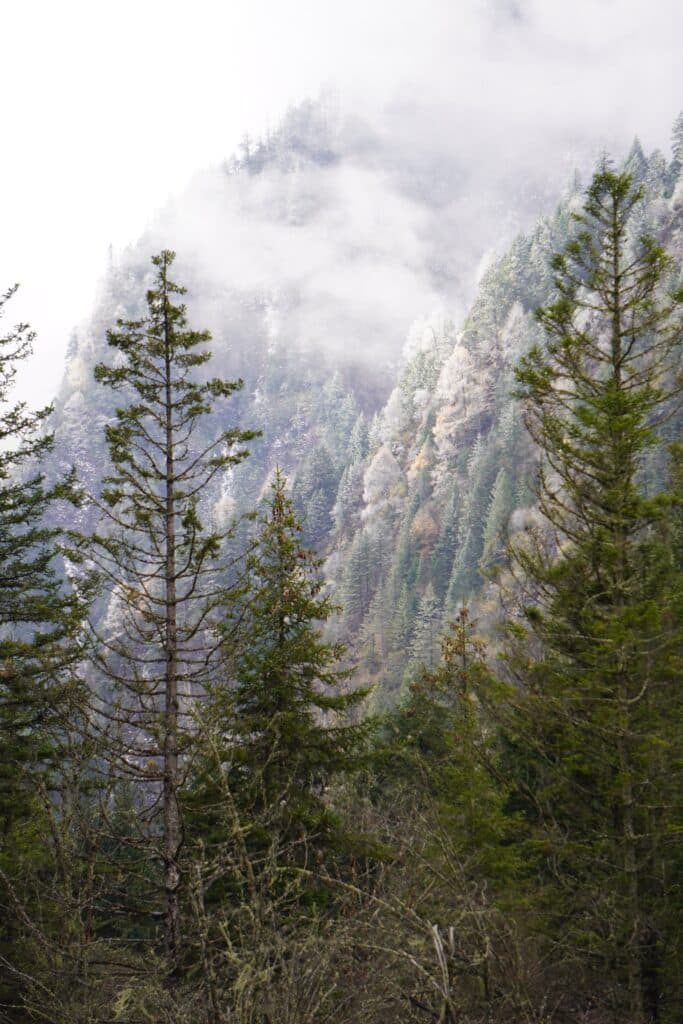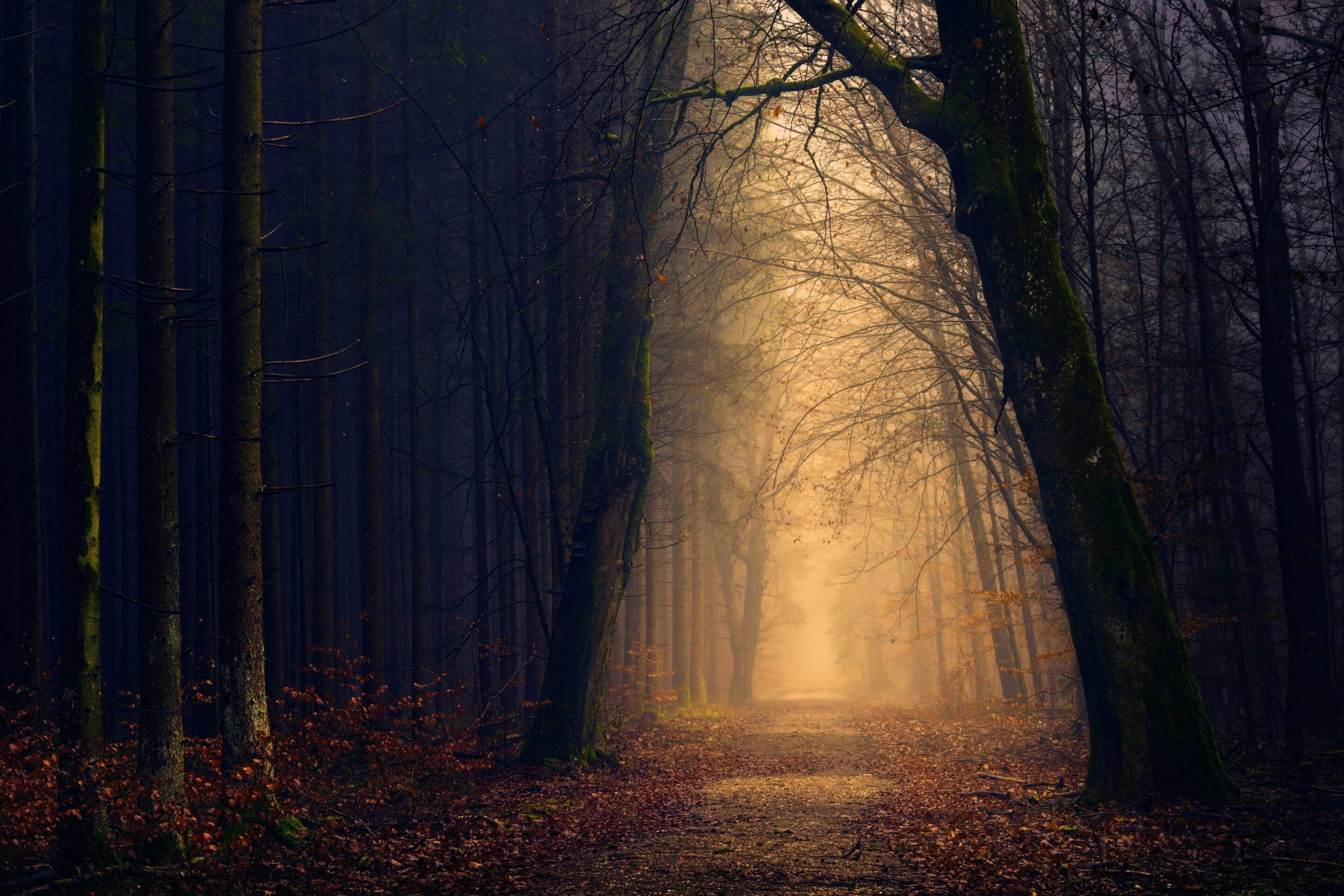Get ready to embark on an unforgettable adventure as we take you on day trips through the stunning wetlands of Guanacaste. Whether you’re an avid nature enthusiast or simply looking to immerse yourself in the beauty of Costa Rica’s biodiverse landscapes, these day trips offer the perfect opportunity to explore Guanacaste’s wetlands and witness an array of fascinating wildlife. From the mesmerizing sight of colorful birds soaring through the sky to the gentle rustle of leaves as monkeys swing from branch to branch, get ready to be captivated by the wonders of nature on these incredible journeys.

Understanding Guanacaste’s Wetlands
Overview of Costa Rica’s biodiversity
Costa Rica is known for its rich biodiversity, and Guanacaste’s Wetlands are no exception. Located in the northwest region of Costa Rica, Guanacaste is home to a diverse range of ecosystems, including lush wetlands. These wetlands provide a habitat for countless plant and animal species, making it a haven for nature enthusiasts and wildlife lovers.
Unique ecosystem of Guanacaste’s Wetlands
Guanacaste’s Wetlands are characterized by their unique ecosystem, which is a delicate balance of water, land, and vegetation. These wetlands are comprised of rivers, lagoons, mangroves, and estuaries, creating a dynamic landscape that supports a wide variety of flora and fauna. The interaction between the freshwater and saltwater environments in the wetlands gives rise to a thriving and complex ecosystem.
Flora and Fauna of Guanacaste’s Wetlands
The flora of Guanacaste’s Wetlands is incredibly diverse, ranging from towering trees to delicate aquatic plants. Visitors can expect to encounter species such as the giant kapoks, mangroves, and water lilies. These plants provide shelter and food for the multitude of animal species that call the wetlands home.
When it comes to fauna, Guanacaste’s Wetlands are teeming with life. Crocodiles, caimans, and turtles can be spotted basking in the sun near the water’s edge. Bird enthusiasts will also be delighted by the sight of colorful herons, egrets, and kingfishers. Keep an eye out for monkeys swinging from branch to branch and iguanas sunning themselves on rocks. The wetlands truly offer an incredible opportunity to witness the beauty and diversity of Costa Rica’s wildlife.
Preparation for Guanacaste Wetlands Exploration
Best time of the year to visit
The best time to explore Guanacaste’s Wetlands will largely depend on your preferences and the activities you wish to engage in. The dry season, which typically runs from December to April, is generally considered to be the best time to visit as the weather is sunny and rainfall is minimal. However, if you prefer a greener landscape and don’t mind occasional showers, the rainy season from May to November can also provide a unique and vibrant experience.
Essential items to pack
When preparing for a trip to Guanacaste’s Wetlands, it is important to pack appropriately for the varying weather conditions and activities. Some essential items to consider bringing include:
- Lightweight and breathable clothing to combat the tropical heat
- Sturdy and comfortable footwear for hiking and walking on uneven terrain
- Sunscreen, hat, and sunglasses for protection against the sun
- Insect repellent to ward off mosquitos and other biting insects
- Binoculars for wildlife spotting and birdwatching
- Camera or smartphone for capturing the stunning landscapes and wildlife encounters
- A waterproof bag or case to protect your belongings from rain or water during water activities
Health precautions
Before embarking on your adventure in Guanacaste’s Wetlands, it is important to take some health precautions to ensure a safe and enjoyable experience. Here are a few tips:
- Stay hydrated by drinking plenty of water, especially in the hot and humid climate.
- Apply insect repellent to protect against mosquito-borne illnesses such as dengue fever and Zika virus.
- Consult with your healthcare provider about any necessary vaccinations or medications needed for travel to Costa Rica.
- It is always a good idea to have travel insurance that covers medical expenses and emergency evacuations.
- Be cautious when handling or approaching wildlife, as some species may be venomous or have aggressive tendencies.
- Follow any safety guidelines or instructions provided by tour guides or park officials.
Guidelines for ecotourism
As an ecotourist exploring Guanacaste’s Wetlands, it is essential to prioritize the preservation and conservation of this delicate ecosystem. Here are some guidelines to follow:
- Respect the wildlife and their natural habitat by observing from a distance and avoiding any interaction that may disturb or harm them.
- Stay on designated trails and paths to minimize disturbance to the flora and fauna.
- Leave no trace by properly disposing of trash and avoiding any kind of pollution.
- Support local communities and businesses that embrace sustainable practices and contribute to the conservation efforts in the area.
- Educate yourself and others about the importance of conserving wetland ecosystems and the role they play in the overall health of our planet.
By following these guidelines, you can ensure that your visit to Guanacaste’s Wetlands is not only enjoyable but also contributes to the long-term preservation of this natural treasure.

Places to Explore in Guanacaste’s Wetlands
Palo Verde National Park
One of the must-visit destinations in Guanacaste’s Wetlands is Palo Verde National Park. This park encompasses over 45,000 acres of wetlands, including the Tempisque River, marshes, and dry tropical forests. The diverse ecosystem of Palo Verde National Park attracts a wide range of bird species, making it a paradise for birdwatchers. Visitors can also embark on boat tours to explore the waterways and witness the abundant wildlife, including crocodiles, monkeys, and even jaguars.
Tamarindo Mangrove and Estuary
For those seeking a unique and tranquil experience, a visit to the Tamarindo Mangrove and Estuary is a must. This protected area is home to an extensive network of mangroves, which serve as nurseries for various marine species. Guided kayak or boat tours allow visitors to navigate through the mangroves, where they can spot birds, reptiles, and marine life. The serene beauty of the Tamarindo Mangrove and Estuary truly immerses visitors in the tranquility of Guanacaste’s Wetlands.
Tenorio Volcano National Park
Located east of Guanacaste’s Wetlands, Tenorio Volcano National Park is known for its enchanting landscapes and the iconic Rio Celeste. This celestial blue river is a must-see highlight of the park and is caused by a unique combination of minerals and light reflection. Visitors can hike through the park’s trails, where they will encounter breathtaking waterfalls, hot springs, and lush vegetation. The diverse range of wildlife, including toucans, howler monkeys, and tapirs, adds to the allure of this natural wonder.
Rincon de la Vieja National Park
Situated on the southern edge of Guanacaste’s Wetlands, Rincon de la Vieja National Park offers an incredible opportunity for outdoor enthusiasts. This volcanic wonderland features an active volcano, mud pots, hot springs, and numerous hiking trails. Visitors can explore the park’s diverse habitats, ranging from dry forests to cloud forests, and encounter an array of wildlife, such as coatis, anteaters, and rare bird species. With its stunning natural beauty and adventurous spirit, Rincon de la Vieja National Park is a must-visit destination in Guanacaste.
Bird Watching in Guanacaste’s Wetlands
Common bird species
Guanacaste’s Wetlands are a haven for birdwatchers, offering the chance to spot a wide variety of bird species. Some of the most commonly seen birds in the wetlands include:
- Great blue heron
- Snowy egret
- Roseate spoonbill
- Green kingfisher
- Black-bellied whistling duck
- Northern jacana
- Boat-billed heron
- Mangrove hummingbird
- White ibis
- American pygmy kingfisher
These bird species are just a glimpse of the rich avian diversity that awaits visitors in Guanacaste’s Wetlands. Whether you are a seasoned birder or a casual observer, the wetlands offer a plethora of opportunities to engage in this fascinating hobby.
Best time for bird watching
The best time for birdwatching in Guanacaste’s Wetlands is generally in the early morning or late afternoon when the birds are most active. The cool temperatures and calm winds during these times create ideal conditions for birdwatching. Additionally, the wetlands offer a different birdwatching experience during the migration season when a variety of migratory bird species pass through the region. This period, typically from November to April, presents a unique opportunity to witness the arrival and departure of these feathered travelers.
Bird watching tours
To maximize your birdwatching experience in Guanacaste’s Wetlands, consider joining a guided bird watching tour. Local guides are knowledgeable about the species that reside in the wetlands and can lead you to the best spots for optimal bird sightings. They can also provide valuable insights into the behaviors and characteristics of the various bird species. By joining a bird watching tour, you can learn and appreciate the incredible avian diversity that Guanacaste’s Wetlands have to offer.

Hiking Trails in Guanacaste
Trails for different skill levels
Guanacaste’s Wetlands boast a variety of hiking trails that cater to different skill levels, ensuring that there is something for everyone to enjoy. From leisurely strolls to more challenging treks, these trails allow visitors to immerse themselves in the natural beauty of the area. Some popular trails include:
- Palo Verde National Park’s Nature Trail: This easy trail offers a leisurely walk through the park’s wetlands, providing an opportunity to see various wildlife and experience the diversity of the ecosystem.
- Rio Celeste Waterfall Trail: Located in Tenorio Volcano National Park, this moderate trail leads to the breathtaking Rio Celeste Waterfall, offering panoramic views and the chance to witness the celestial blue waters.
Guided trekking tours
For those who seek a more immersive and educational hiking experience, guided trekking tours in Guanacaste’s Wetlands are an excellent option. Knowledgeable guides will lead you through the trails, pointing out unique flora and fauna, and sharing their expertise on the ecological importance of the region. These guided tours also ensure your safety and provide informative commentary that can enhance your understanding and appreciation of the wetlands.
Safety recommendations
When embarking on a hiking adventure in Guanacaste’s Wetlands, it is important to prioritize safety. Here are some safety recommendations to keep in mind:
- Inform someone about your hiking plans, including the trails you will be taking and the estimated duration of your hike.
- Stay on marked trails to avoid getting lost or disturbing sensitive habitats.
- Carry a map or GPS device to navigate the trails accurately.
- Carry sufficient water, especially in the warm and humid conditions, to stay hydrated throughout your hike.
- Wear appropriate hiking footwear and comfortable clothing that will protect you from the elements and potential hazards.
- Be aware of your surroundings and watch for any signs of wildlife or hazardous conditions on the trails.
- Take breaks when needed and listen to your body to prevent overexertion.
By following these safety recommendations, you can ensure a safe and enjoyable hiking experience in Guanacaste’s Wetlands.
Water Activities in Guanacaste’s Wetlands
Kayaking through mangroves
Exploring the waterways of Guanacaste’s Wetlands through kayaking is an incredible way to immerse yourself in the natural surroundings. Kayaking allows you to navigate through the mangroves and estuaries, reaching areas inaccessible by foot. As you paddle through the calm waters, you can observe the diverse wildlife, including birds, reptiles, and marine species. Whether you are a beginner or an experienced kayaker, this water activity offers a unique perspective of Guanacaste’s Wetlands and allows you to forge a deeper connection with nature.
Stand-up paddleboarding
Stand-up paddleboarding (SUP) has gained popularity as a recreational activity in recent years, and Guanacaste’s Wetlands offer an ideal setting for this water sport. SUP allows you to glide across the surface of the water, giving you a different vantage point to appreciate the wetlands’ beauty. It is a peaceful and meditative way to explore the mangroves and estuaries, offering a low-impact workout at the same time. Whether you are a beginner or an experienced paddler, SUP in Guanacaste’s Wetlands is an enjoyable and unforgettable experience.
Boat tours
For those who prefer a more relaxed and leisurely way to experience Guanacaste’s Wetlands, boat tours are an excellent option. These guided tours take you along the rivers, lagoons, and estuaries, providing a comfortable and panoramic view of the wetlands. Along the way, you can spot various wildlife, such as crocodiles, monkeys, and a wide variety of bird species. Boat tours also offer the opportunity to learn from knowledgeable guides who can share insights on the wetland ecosystem and its importance for conservation.

Wildlife Spotting in Guanacaste’s Wetlands
Commonly seen animals
Guanacaste’s Wetlands offer incredible wildlife spotting opportunities, allowing visitors to observe a diverse range of animal species. Some commonly seen animals in the wetlands include:
- Crocodiles and caimans: These reptiles can often be spotted sunning themselves near the water’s edge or lurking just beneath the surface.
- Monkeys: Species such as howler monkeys, capuchin monkeys, and spider monkeys swing through the trees, creating an entertaining spectacle for visitors.
- Iguanas and lizards: These reptiles can be found basking in the sun, camouflaged among the vegetation, or scurrying across the forest floor.
- Turtles and tortoises: Different species of turtles and tortoises, including the endangered hawksbill turtle, inhabit the wetlands.
- Amphibians: Frogs, toads, and salamanders are abundant in Guanacaste’s Wetlands, with their vibrant colors and unique adaptations making them fascinating subjects for observation.
Best time for wildlife spotting
The best time for wildlife spotting in Guanacaste’s Wetlands is often early in the morning or late in the afternoon, as many animals are more active during these times. The cooler temperatures and lower levels of human activity create ideal conditions for wildlife to venture out and forage for food. Additionally, the dry season, from December to April, offers better visibility as vegetation is less dense, making it easier to spot animals. However, wildlife can still be observed year-round, so be prepared for surprises and keep your eyes peeled during your visit.
Guided wildlife tours
To enhance your wildlife spotting experience in Guanacaste’s Wetlands, consider joining a guided wildlife tour. Local guides possess in-depth knowledge of the flora and fauna in the area, increasing your chances of encountering a wide variety of animals. They can share interesting facts about the species you encounter, behaviors to watch out for, and the importance of conservation efforts. These guided tours not only provide an educational experience but also contribute to sustainable tourism practices in the region.
Photography in Guanacaste’s Wetlands
Photography tips for wetlands
Guanacaste’s Wetlands offer incredible opportunities for photography, allowing you to capture the beauty and diversity of the ecosystem. Here are some photography tips to help you make the most of your experience:
- Research the best time of day for lighting conditions, typically early morning or late afternoon, to capture soft and warm lighting.
- Use a telephoto lens to capture wildlife from a distance without disturbing them or compromising their natural behavior.
- Experiment with different angles and compositions to showcase the unique characteristics of the wetlands.
- Utilize leading lines, such as winding rivers or paths, to create depth and draw the viewer’s eye into the image.
- Keep an eye out for interesting patterns, textures, and colors in the flora and fauna of the wetlands.
- Remember to be patient and observe the wildlife to capture intimate and authentic moments.
- Respect the natural environment by avoiding any disturbance to wildlife or their habitats.
Expected photography opportunities
In Guanacaste’s Wetlands, you can expect a range of photography opportunities that showcase the unique ecosystem. From capturing the vibrant colors of tropical birds to documenting the interactions between different species, the wetlands offer endless possibilities. Don’t forget to capture the stunning landscapes, including mangroves, estuaries, and the diverse plant life. Additionally, keep your camera ready for unexpected encounters, such as a crocodile emerging from the water or a monkey swinging through the trees. With a keen eye and a bit of patience, you can create memorable photographs that tell the story of Guanacaste’s Wetlands.
Photography tours
To enhance your photography skills and capture the best images in Guanacaste’s Wetlands, consider joining a photography tour. These tours are led by experienced photographers who know the most photogenic spots and understand the optimal settings for different conditions. They can provide guidance on composition, lighting, and camera techniques, helping you elevate your photography skills to the next level. Additionally, photography tours often create a supportive and inspiring community, allowing you to connect with fellow photography enthusiasts and share your passion for capturing moments in nature.

Unique Experiences in Guanacaste’s Wetlands
Night tours
Guanacaste’s Wetlands offer a unique and enchanting experience after the sun sets. Night tours allow you to explore the wetlands under the cover of darkness, revealing a whole new side of the ecosystem. Armed with flashlights or headlamps, you can witness the nocturnal activities of various animal species, such as reptiles, insects, and mammals. Keep an ear out for the mesmerizing calls of frogs and the rustling sounds of creatures navigating the wetlands. Embarking on a night tour in Guanacaste’s Wetlands guarantees an unforgettable adventure that transports you into a world few have the opportunity to witness.
Cultural experiences with local communities
In addition to the natural wonders, Guanacaste’s Wetlands offer opportunities to engage with local communities and immerse yourself in the vibrant culture of the region. Local indigenous communities welcome visitors to learn about their traditions, beliefs, and way of life. Traditional crafts, folk dances, and music performances are just a few examples of the cultural experiences you can enjoy. By embracing these encounters, you can gain a deeper appreciation for the interconnectedness between the wetlands and the people who have coexisted with this ecosystem for generations.
Food and drink to try in Guanacaste
No visit to Guanacaste’s Wetlands would be complete without indulging in the region’s delectable cuisine. Costa Rican cuisine is known for its simplicity, freshness, and emphasis on local ingredients. Some must-try dishes include:
- Gallo pinto: A traditional breakfast dish made with rice, beans, and spices, often served with eggs, plantains, and tortillas.
- Casado: A typical lunch dish consisting of rice, beans, meat or fish, and a variety of sides such as plantains, salad, and tortillas.
- Ceviche: A refreshing seafood dish made with raw fish or shrimp marinated in citrus juices, often mixed with onions, cilantro, and peppers.
Don’t forget to pair your meals with Costa Rican favorites such as the vibrant hibiscus flower drink called “agua de jamaica” or the smooth and rich Costa Rican coffee. Exploring the cultural and culinary delights of Guanacaste will not only satisfy your taste buds but also deepen your connection to the region.
Accommodation and Hospitality in Guanacaste
Types of accommodations available
Guanacaste offers a range of accommodations to suit every traveler’s needs and preferences. From luxurious resorts to cozy eco-lodges, there is something for everyone. Some common types of accommodations in Guanacaste include:
- Resorts: These large-scale establishments offer a wide range of amenities such as pools, restaurants, and spas, providing a luxurious and all-inclusive experience.
- Eco-lodges: These environmentally conscious accommodations blend seamlessly with the natural surroundings, providing a sustainable and immersive experience.
- Boutique hotels: These smaller, independently owned accommodations offer a more personalized and unique experience, often with stylish decor and personalized service.
- Vacation rentals: For those seeking a more private and independent stay, vacation rentals such as villas or apartments offer the comforts of home and the flexibility to create your own itinerary.
Eco-friendly accommodations
As sustainability and conservation efforts become increasingly important, Guanacaste’s Wetlands are home to many eco-friendly accommodations. These establishments prioritize practices that minimize their environmental impact, such as using renewable energy sources, conserving water, and implementing recycling programs. Staying in an eco-friendly accommodation allows you to support responsible tourism and contribute directly to the preservation of Guanacaste’s unique ecosystem.
Local hospitality
Guanacaste is known for its warm and welcoming hospitality, with locals eager to share their vibrant culture and natural wonders with visitors. Whether you are staying in a large resort or a small eco-lodge, you can expect friendly and attentive service. Local staff members are often enthusiastic about sharing their knowledge of the wetlands and providing recommendations for the best activities or hidden gems in the area. The genuine hospitality and warmth of the people in Guanacaste create a memorable and enriching experience for visitors.
In conclusion, Guanacaste’s Wetlands offer a myriad of experiences for nature enthusiasts. From exploring diverse ecosystems to spotting unique wildlife, the wetlands provide a captivating and immersive adventure. With proper preparation, respect for the environment, and an open mind, your visit to Guanacaste’s Wetlands is sure to be a memorable journey filled with endless discoveries.







0 Comments